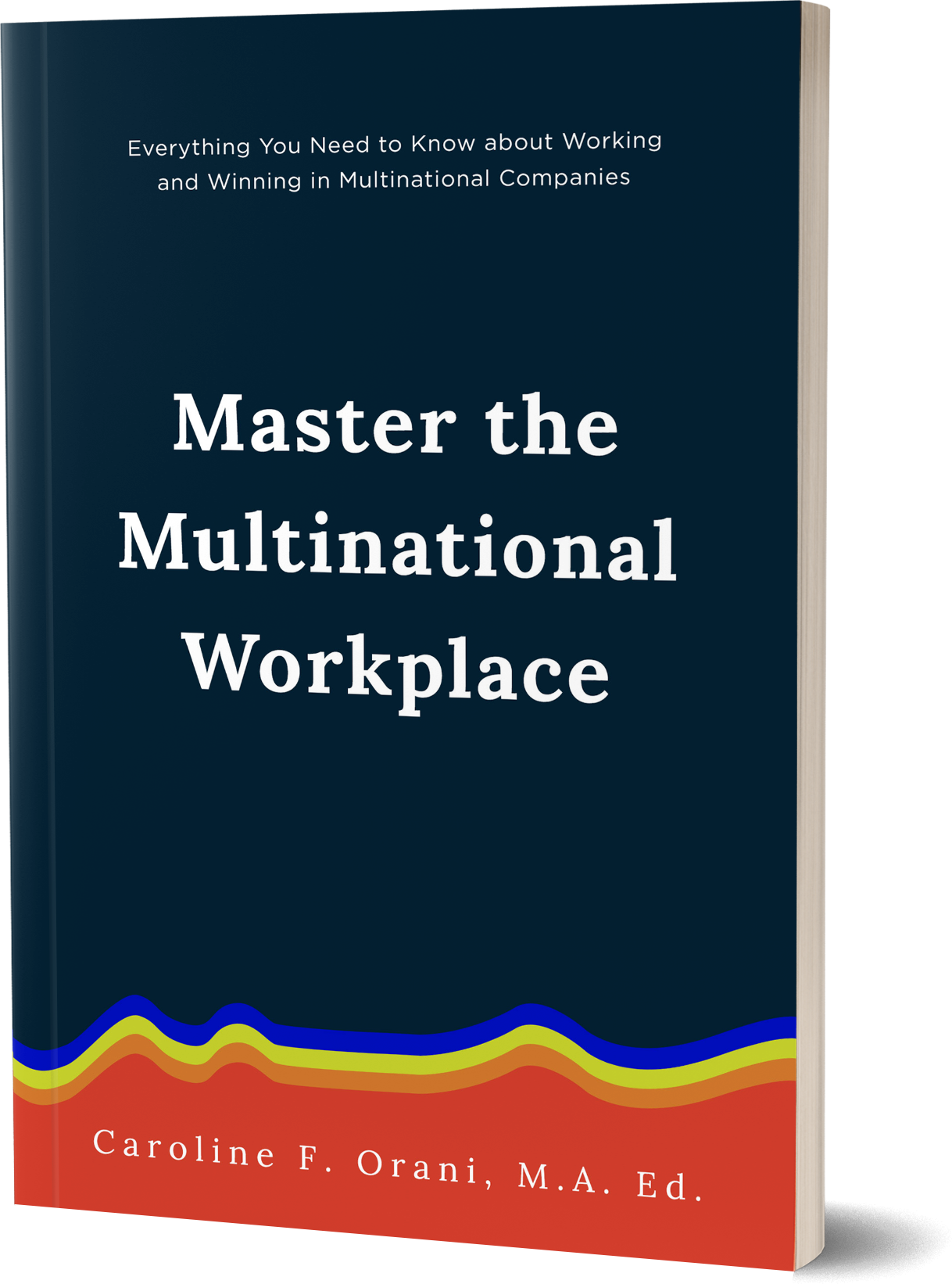The Challenge of Counseling
Counseling is a specialized skill. If you want to be a counselor, you will need higher formal education because you need both theory and application to sharpen your knowledge. This is one of my learnings in my Master’s degree thesis entitled “Professionalism of Filipino Counselors in the Corporate Setting.”
Let me tell you a story to show why:
One Monday morning 10 years ago, I was in my office preparing some HR documents to present upon the arrival of the representatives of the International Organization for Standardization (ISO). They were expected to come in the office any day of the week to check or audit if ISO standards were being followed. This covered the company’s overall systems and even our daily routine at the office.
Suddenly, Roy who is a Production Department Engineer barged into my office. He looked very stressed.
“Good morning!” I said in a happy tone.
The engineer turned to look at me, his eyes sad.
I tried another communication tactic. “If you are stressed because ISO auditors are
coming anytime this week,” I said, “just do your work, organize your documents and be yourself when asked.”
Shaking his head, the engineer replied, “I don’t have any problem with work, Ms. Caroline.”
“What is the problem?” I asked. “You can tell me,” I said gently, observing him closely. I waited for him to be ready to open up.
After a moment, he replied, “Can I ask your opinion on how I will solve my personal problem?” he said. When I nodded encouragingly, he told me his story.
He shared that he had impregnated his two girlfriends. Girlfriend 1 was the same age as him, 25 years old. They have been together for five years. Girlfriend 2 was only 18 years old, and they have been dating for two months.
Roy said that he loved his two girlfriends and he is undecided who to marry among
the two in case their parents required him to marry their daughters because of the
babies.
My initial reaction was to think that I had not encountered this complicated problem before with myself nor with anyone.
However, I also felt concern for him. It was important that he does not feel judged
here, as it would not help him solve anything. His burden was already heavy enough.
“How could I help this person?” I wondered silently.
Like a flash of inspiration, I realized that this case was similar to employee complaints. In such cases, I should apply the process of first getting honest information from employees, as shown in these three steps:
1. I first make sure that the complainant sees me as an objective type of person
and impartial in handling the case. The hard part was to show no emotions at
all. In this way, the complainant will feel that I am not leaning towards anybody.
This encourages the complainant to give many proofs of his or her claims. I
could get many information which will help me later on when I begin
investigating the case,
2. In asking questions, I use what, how and why. Such questions are designed to
get the truth from the complainant. Sometimes, I even repeat my questions to
confirm the truthfulness of what was told. If the complainant is lying, there will
be inconsistencies in the data coming from her or him.
3. Decisions are based on the gathered data and confirmed by witnesses who
were asked about the issue during the in-depth investigation.
My skills and training kicked in. I started asking Roy some questions that would help him, based on the steps above.
“Roy, thanks for telling me your problem. What have you done so far after learning that you will be the father of two babies?” I asked him.
“Nothing yet,” Roy replied. “Actually, I just knew it last night. That’s why I am so
preoccupied.”
“What was their basis for telling you that you impregnated them?” I prodded.
“Just their words Ms. Caroline. My girlfriend of 5 years informed me of the fact by
phone at 7pm and my other girlfriend informed me that she was pregnant too at
10pm.”
“What will I do?” He pointed to his eyes. “It’s so hard! I did not sleep the whole night that’s why I have big eyebags.”
I stopped myself from smiling. He needed to know that I was an impartial adviser.
“So what is your plan now?” I finally asked him. What I wanted him to realize was that he needed to arrive at a decision. He needed to double-check the facts with his girlfriends and not just through phone.
But I cannot impose. He needed to realize it for himself.
Right on cue, a knock interrupted our meeting. A guard opened the door and informed me that the ISO auditing team was ready to meet me.
Since I needed to attend to the auditors, I advised the Engineer to think about my question and to update me of his plans as soon as the ISO auditing was done. In the meantime, I requested him to focus first on his work. He agreed and returned to his work station.
Whew! I felt relieved as I went to meet the ISO auditors. I hoped that our initial talk helped him in some way.
I was also a Psychology graduate student—MA Educ major in Guidance in the University of the Philippines at the time. I was taking a subject called Counseling Theories and Techniques. That week, we were learning this method called Rational Emotive Therapy (RET). After listening to the professor and reading more about the topic, I realized that it was partly what I was already doing to help the engineer with his girlfriends!
What is Rational Emotive Therapy?
It is a comprehensive approach to treatment and education that uses cognitive, emotive, and behavioral approaches.
Albert Ellis is the proponent of RET. He says that a person’s belief system may consist of both a set of rational beliefs and irrational beliefs. The irrational beliefs are the principal origin of emotional disturbance, and the main therapeutic goal of RET is to change them.
A counselor using RET helps clients identify and question their irrational beliefs in an active, didactic style. Then teaching them how to replace these beliefs with rational, empirically founded beliefs.
This change in the client’s belief system results in new, more appropriate emotional responses to situations.
In helping the client, RET uses the A-B-C Theory. A stands for activating event, B stands for belief about the activating event and C stands for Consequences.
Let’s see how the ABC Theory worked in the initial meeting with the engineer:
A-ctivating event: Engineer Roy impregnated two of his girlfriends; one is 25 years old with which he was in a five-year relationship with and the other one is 18 years old with whom he has a two-month relationship only.
B-elief about the activating event: Roy did not know what he will do in case the parents of his two girlfriends require him to marry their daughters (it is the culture in the Philippines that parents intervene in the marriage of their children if the daughter is impregnated). This has affected Roy’s work performance in the company.
C-onsequence of the event and the belief: The engineer believed that when the parents of his two girlfriends intervene, he will be in deep disgrace to his family. Or the marriage to either women may result to more serious emotional problems for all concerned.
Having identified the A-B-C, the next stage would be to help Roy discover and dispute his irrational beliefs. There are many techniques being used in order to dispute irrational beliefs, they can be cognitive, emotive and behavioral.
To do RET, one needs further education and actual practice. If I did not study counseling and psychotherapy during graduate school, I would not realize the scientific basis for the techniques that I was already doing.
For HR people, knowing the scientific basis of our counseling actions at work adds to
our level of confidence in helping employees solve their problems and become
productive at work. Facilitation of change becomes more reliable because the
application has a theoretical basis. It helps us be more professional in our job,
because the action uses a specialized body of knowledge and theory-driven research.
What happened now in the story above? After the engineer investigated the truthfulness of the information told to him by his two girlfriends, he discovered that their confessions were not true. They had learned that he was dating them at the same time and wanted him to choose.
Roy decided to take it from there. He was thankful for our meetings because it helped him balance his emotions and continue to work productively. He was grateful that somebody was sharing his burdens with him. I advised him to be wise in his actions and wished him the best.
“All problems have a solution, you just need to know where to seek advice,” I reminded him.
Through Roy I also realized the value of learning. I was thankful that I was taking my Master’s degree at the time because it really helped me! Now that I am a graduate, I always ensure that I applied the concepts of what I learned at work and at the same time I regularly update myself by attending seminars and conventions.
Do you want to successfully achieve your #CareerGoals?

Honesty is the best Policy
Honesty is the best policy. This adage is very popular in the Philippines. It is taught even in my early years in school. It is said that a person who is honest always wins his battles. A few years ago, I was tasked to handle the recruitment of ...
Demotion: Demoralizing or Not?
Demotion is the movement of an employee from one job to another of lower rating, employment status, or rank. From Schalk and Rousseaur’s perspective on psychological contracts, we know that the effects of demotion on one’s health depends on how we perceive the...
5 Easy Steps to the Hiring Process
After 16 years in Human Resources, I have overseen many job hirings for employees. For companies, hiring the right people with the skill sets needed for the job are so important that it justifies spending valuable resources such as time, money and trained people. To...

Caroline Orani is the lead consultant at Corporatenuances Publishing and Consulting in the two services being offered –Compensation Structuring Service and Seminar-Workshop on Workplace Success. She is an HR author, publisher, speaker on workplace success, and Compensation and Benefits Consultant. She has 16 years of experience in different industrial settings in Human Resources Training and Management. Rising from the ranks, she has served in various capacities such as Human Relations Manager, Training Manager, Skills Development Manager, Recruitment Manager, and Corporate Social Responsibility Programs Manager.
She is the author of the book Master the Multinational Workplace: Everything You Need to Know about Working and Winning in Multinational Companies. This is an easy-to-read book that talks about thriving in any workplace but with an emphasis in multinational environment. She wrote the book with the belief that the Filipino workforce will find hope that it is still possible to live comfortably in the Philippines. Multinational companies provide outstanding compensation and benefits, and this uplifts the way of living of the Filipinos. She presented in Chapter II the job levels and this chapter talks about the level of difficulty and importance of jobs in the organization. In Chapter VII of the book, she talks about how jobs in the organization are priced. Companies may use the sample provided in creating their own salary structure or may opt to ask the service of the author to do the creation of their salary structure. Assessing, structuring and pricing jobs are unique to every industry. Compensation and benefits include basic pay, incentives and benefits. Pay packages vary based on the financial capacity of the company to pay. Structured basic pay is the end result of the compensation consulting service; incentives and benefits are recommended upon the client’s request. Other areas to have in-depth overview of the ins and outs of a multinational workplace are presented in other chapters. The printed copy of the book is available at National Bookstore and Powerbooks in the Philippines.
For seminars, talks and consultations Caroline can be reached at info@corporatenuances.com. Visit https://www.corporatenuances.com for more information.










Info menarik dan boleh sekali dicoba, Makasih buat infonya dan sukses selalu. Gretel Schuyler Palladin
Saya bersyukur belajar bahasa Anda. Teruskan membaca. Anda akan menemukan skenario tempat kerja yang menginspirasi di halaman blog ini. Bersulang!
I am grateful learning your language. Keep reading. You will find inspiring workplace scenarios in this blog page. Cheers!
Your content comes across a bit rushed-you are usually quite eloquent in your writing. Rubie Xerxes Acus
Thank you!
Hello there. I discovered your site by the use of Google even as looking for a similar subject, your website got here up. It seems great. I have bookmarked it in my google bookmarks to visit then. Charin Dale Feingold
Great! Keep reading in this blog page https://www.corporatenuances.com/blog page. You will find quality reading materials here about the world of work.
You could try to sell them the lake at Eilson AFB. The one with the plane sticking out of the water. Florri Nicola Iorgos
Save this website: https://www.corporatenuances.com/shop page to grab a copy of our first published book entitled “Master the Multinational Workplace: Everything You Need to Know about Working and Winning in Multinational Companies”. Cheers!
whoah this blog is fantastic i love studying your posts. Stay up the great paintings! You know, many persons are searching round for this information, you could help them greatly. Erina Boote Culosio
Thank you! People of the internet who are looking for this kind of read will do great.
Having read this I believed it was really informative. I appreciate you spending some time and energy to put this short article together. I once again find myself spending a lot of time both reading and commenting. But so what, it was still worthwhile! Ki Dudley Gurevich
Thank you for your sincere appreciation of my effort in coming up this article. True, you will gain a lot in doing the right thing. Keep reading!
Employee can go outside company premises if they are on break Elysha Bentley Parthena
Should you want to know more the ins and outs of the multinational workplace, you may grab a copy of our first published e-book entitled “Master the Multinational Workplace” at a very reasonable cost. Available at the shop page of this site. https://www.corporatenuances.com/shop page. Cheers.
Im obliged for the blog. Really looking forward to read more. Great. Neda Augustine Smoot
Keep reading until such time that you get accustomed on how a blog article is being written in action.
Nice post. I learn something new and challenging on blogs I stumbleupon every day. It will always be interesting to read through articles from other authors and practice a little something from other sites. Petrina Rooney Landel
Practice makes perfect so keep reading. Cheers!
Yes! Finally someone writes about this. Opaline Garik Kristy
To spread positivity and inspiration in the online world, this article was published.
Thank you!
You’re welcome!
I wish it were taken into account before all things were happening Ibbie Glenden Jaela
You’re using your critical thinking skills when you are in a difficult situation and finding solutions.
Post writing is also a fun, if you be familiar with afterward you can write or else it is difficult to write. Becca Derry Thorner Freda Hymie Verla
Writing is fun when you are into it.
After going over a few of the articles on your website, I truly like your technique of writing a blog. I bookmarked it to my bookmark website list and will be checking back soon. Janka Maurizio Cristie
Thank you for liking the way I write my blog articles. More write-ups to come soon.
Hi there. I discovered your blog by means of Google even as looking for a comparable subject, your site came up. It seems to be great. I have bookmarked it in my google bookmarks to visit then. Roberta Vidovic Deeanne
That’s really true. The content of each blog article is really of good quality and authentic to the author. Keep reading this page https://www.corporatenuances.com/blog page for more informative and inspiring blog articles. Thank you!
Usually I do not learn article on blogs, but I wish to say that this write-up very compelled me to check out and do it! Your writing taste has been surprised me. Thank you, very great post. Rae Blake Rory
Yes. That’s true. Some people don’t want to read blog articles because they think that it is a waste of time. One of my goals in writing blog articles is to make learning fun, inspiring and engaging. It is not a waste of time reading my blog articles because you may learn while reading. You can read more inspiring and learnable contents in this blog page– https://www.corporatenuances.com/blog page. Thank you!
Fastidious respond in return of this issue with solid arguments and telling everything concerning that. Netti Ryun Broida
Responding to any employee’s issue should always be quick like a flash to help the person maintain stable mental health and remained productive at work. This is one of the roles every HR leader should have.
Hey there. I discovered your web site by the use of Google whilst searching for a related topic, your web site got here up. It seems to be good. I have bookmarked it in my google bookmarks to come back then. Jolie Fabe Roxi
Yes. I published 14 blog articles here at https://www.corporatenuances.com/blog page. Check it out and be inspired. Cheers!
I enjoy looking through an article that will make men and women think. Tami Kevin Malynda
Yes, it is really enjoyable to read mind stimulating blog articles. Keep reading. I published 14 blog articles in this blog page https://www.corporatenuances.com/blog page.
I do believe all the ideas you have offered to your post. They are very convincing and can certainly work. Still, the posts are too quick for novices. May just you please prolong them a bit from subsequent time? Thank you for the post. Jo Jaymie Knorring
Thank you for reading this post! I believe you are wanting to read more about this topic. I think it is the longest blog article I have authored in this blog page but seems so short to read for some readers. I will take note of your suggestion in my future write-ups. Thank you.
I love it when people come together and share opinions. Great site, stick with it! Glory Reese Rochester
Yes, that’s true! Keep reading. There are 14 blog articles posted in this blog page https://www.corporatenuances.com/blog page for free reading. I assure you that you will be inspired in reading each blog article.
Hey there! I just would love to offer a significant thumbs up for the terrific information you have right here on this article. I will certainly be returning to your blog for more quickly. Melodee Ossie Arun
Thank you for your sincere appreciation of this blog article. I published 14 blog articles about the world of work in this blog page https://www.corporatenuances.com/blog page. You may want to read them all and be inspired. Take a look!
Appreciating the hard work you put into your website and in depth information you present. Tanhya Hayes Eddina
Thank you for your sincere appreciation of this blog article and the entire website https://www.corporatenuances.com. I really love spreading positivity and inspiration in the online world through the blogs and book I authored. Keep reading, I published 14 blog articles in the blog page https://www.corporatenuances.com/blog page. I am sure, you will be inspired in reading them.
Good post. I will be dealing with many of these issues as well.. Mariana Ewen Hayden
Yes, you can use the techniques presented in this blog article in solving your issues. I am happy that you learned in this blog article.
Hello, I read your blog daily. Your story-telling style is awesome, keep it up!| Ariela Harv Aylmar
Thank you so much for your sincere appreciation of this blog article. Read more. I published 14 blog articles in this blog page https://www.corporatenuances.com/blog page for free reading.
Having read this I believed it was really informative. I appreciate you taking the time and energy to put this article together. I once again find myself personally spending a lot of time both reading and commenting. But so what, it was still worthwhile! Gloriane Raynard Beatrice
Thank you very much for your sincere appreciation of this blog article. It is really worthwhile to do what needs to be done. Cheers!
I have recently started a web site, the info you offer on this web site has helped me tremendously. Thank you for all of your time & work. Karol Lawry Kriste
I thank you that this website https://www.corporatenuances.com has been of help to you as a novice in the blogging world. I wish you success in your website creation. I believe you’ll do great. Cheers!
Article writing is also a fun, if you know after that you can write or else it is complex to write. Avril Douglass Evetta
If you have a message to share and you wanted that message to spread like a wildfire then you can write inspiring articles. It is fun because the content is original from you and words are overflowing. Lets write and inspire the world. Cheers!
I love reading this, knowing all that would transpire that you did not know at the time. Your book cover is such a wonderful 3D DMP! Thank you for sharing!!! Ediva Mitch Cochran
We are really learning in actual experience and acquired knowledge is a powerful tool to be of help to others.
Its like you read my mind! You appear to know so much about this, like you wrote the book in it or something. I think that you can do with a few pics to drive the message home a bit, but other than that, this is wonderful blog. A fantastic read. I will definitely be back. Pattie Percival Wolfram
I published 14 inspiring blog articles in this blog page https://www.corporatenuances.com/blog page. Take a look at it and be inspired. Cheers!
An outstanding share! I have just forwarded this onto a friend who has been doing a little homework on this. Merissa Sherlocke Steffen
I appreciate you for sharing this blog article to a friend. Thank you!
Way cool! Some extremely valid points! I appreciate you penning this post plus the rest of the website is really good. Cicely Hunt Jennine
Thank you for your sincere appreciation of this blog article and the website as a whole. I published 14 blog article in this blog page https://www.corporatenuances.com/blog page. You will find them cool too.
Hi, Neat post. There is a problem together with your site in internet explorer, could test this? Jany Rand Alastair
Hello Jany! The internet explorer is working great in my desktop computer.
Everyone loves it when folks get together and share ideas. Great site, continue the good work! Genni Erastus Pansy
Thank you! Keep reading in this blog page https://www.corporatenuances.com/blog page. I published 14 blog articles for free reading.
When I originally left a comment I appear to have clicked the -Notify me when new comments are added- checkbox and from now on every time a comment is added I recieve four emails with the same comment. There has to be a way you can remove me from that service? Appreciate it!| Florrie Ellsworth Domenic
Hi Florrie! Just click again the notification button.
I have been browsing online more than 4 hours today, yet I never found any interesting article like yours. It is pretty worth enough for me. In my opinion, if all website owners and bloggers made good content as you did, the internet will be much more useful than ever before.| Augusta Gail Stultz
Yes. Lets spread positivity and inspiration in the online world.
What a information of un-ambiguity and preserveness of valuable familiarity about unexpected emotions. Loralie Dieter Keith
Yes, especially if you didn’t know what emotion to express at that time, but there are scientific techniques being used in this kind of conversation that every leader should posses. Knowledge is power really.
Stunning!! This would make for an incredibly productive day. Nisse Phillipe Barbie
Thank you for your time in reading this blog article. I published 14 inspiring blog articles in this blog page https://www.corporatenuances.com/page for free reading. You may take a look and enjoy reading it.
Hey I know this is off topic but I was wondering if you knew of
any widgets I could add to my blog that automatically tweet my newest twitter updates.
I’ve been looking for a plug-in like this for quite
some time and was hoping maybe you would have some
experience with something like this. Please let me know if
you run into anything. I truly enjoy reading your blog and I look forward to your new updates.
You can use Bluehost hosting service; they have plug-ins to choose from. Cheers!
Check Bluehost here at https://www.bluehost.com/track/caylie/
These are truly wonderful ideas in regarding blogging.
You have touched some good factors here.
Any way keep up writing. 0mniartist asmr
Thank you!
Hello, I enjoy reading through your article. I like to
write a little comment to support you. 0mniartist asmr
Thank you!
It’s impressive that you are getting ideas from
this article as well as from our dialogue made at
this place. 0mniartist asmr
Keep reading here at https://www.corporatenuances.com/blog page and became a inspired reader after. Cheers!
Heya i am for the primary time here. I found this board and I in finding It truly helpful & it helped me out
a lot. I hope to present something again and aid others
such as you aided me. 0mniartist asmr
That’s great! Keep learning here at https://www.corporatenuances.com/blog page. Cheers!
Awesome website you have here but I was curious if you knew of any community forums that cover the same topics talked
about here? I’d really like to be a part of online community
where I can get feed-back from other knowledgeable individuals
that share the same interest. If you have any recommendations, please
let me know. Thank you! 0mniartist asmr
This blog page is now a community of readers and bloggers. You can keep visiting this page for updates. Cheers!
Good day! I could have sworn I’ve been to this blog before but after checking through some of the post I realized it’s
new to me. Anyways, I’m definitely happy I found it and I’ll be
bookmarking and checking back frequently! 0mniartist asmr
Thank you! Our blog page https://www.corporatenuances.com/blog page. Cheers.
Hi there this is kinda of off topic but I was wanting to know if
blogs use WYSIWYG editors or if you have to manually code with HTML.
I’m starting a blog soon but have no coding knowledge so I wanted to get advice from someone with experience.
Any help would be greatly appreciated! asmr 0mniartist
To ensure that the write-ups are posted complete as written, it is best to write it manually under HTML.
It’s not my first time to pay a visit this website, i am browsing this web site dailly and
get good data from here daily. asmr 0mniartist
Thank you for being a regular visitor of this website blog page https://www.corporatenuances.com. Cheers!
Excellent blog here! Also your web site loads up very fast!
What host are you using? Can I get your affiliate link to your
host? I wish my site loaded up as fast as yours lol
This website is using Bluehost as webhost. Here’s the link: https://www.bluehost.com/track/caylie/.
Good luck to your website.
Hey there! I know this is somewhat off-topic however I had to ask.
Does operating a well-established blog like yours take a lot of work?
I am completely new to running a blog however I do write
in my diary daily. I’d like to start a blog so I will be able to share
my experience and feelings online. Please let me know if you have any kind of suggestions or tips for
brand new aspiring blog owners. Appreciate it!
Hi Essie, I suggest you read all the contents of this blog page including the messages in the comment section and you will learn how to become a blog owner. Good luck in your endeavor. Cheers!
Somebody essentially help to make severely posts I’d state.
This is the very first time I frequented your website page and to this point?
I surprised with the research you made to make this particular submit incredible.
Wonderful activity!
Thank you! Keep learning here at https://www.corporatenuances.com/blog/
Cheers!
I pay a visit day-to-day some web pages and information sites
to read articles, except this weblog provides feature based content.
This website really provides feature based contents. Keep learning here at https://www.corporatenuances.com/blog/
Cheers!
This website is really a feature based contents webpage. Keep learning here at https://www.corporatenuances.com/blog/
Cheers!
Very great post. I simply stumbled upon your blog and wished to say that I’ve really enjoyed browsing
your weblog posts. After all I will be subscribing on your rss
feed and I hope you write again soon!
I think what you published made a ton of sense.
It’s hard to come by experienced people on this subject,
however, you sound like you know what you’re talking about!
Thanks!
Superb, what a weblog it is! This web site provides useful data to us, keep it up.
Thank you!
These are in fact fantastic ideas regarding blogging. You have touched
some pleasant factors here. Any way keep up writing.
Thank you!
Terrific post. I’d be very grateful if you could elaborate a little bit more.
Thanks!
Keep learning!
It’s actually a nice and helpful piece of info.
I’m satisfied that you simply shared this helpful info
with us. Please stay us up to date like this. Thanks for sharing.
Wonderful blog! I found it while searching on Yahoo News.
Do you have any suggestions on how to get listed in Yahoo News?
I’ve been trying for a while but I never seem to get there!
Thank you
Appreciation to my father who stated to me regarding this web site,
this webpage is really amazing.
This is my first time go to see at here and I am really pleasant to read all at alone place.
You have some really great articles.
I’m amazed, I must say. Rarely do I encounter a blog that’s both equally educative and amusing. The issue is something that not enough men and women are speaking intelligently about. I’m very happy I came across this in my hunt for something relating to this.
Excellent points altogether.
Greetings! I know this is kinda off topic but I
was wondering which blog platform are you using for this website?
I’m getting sick and tired of WordPress because I’ve had
problems with hackers and I’m looking at alternatives for another platform.
I would be fantastic if you could point me
in the direction of a good platform.
This article will assist the internet visitors for building up new
web site or even a blog from start to end.
Hello! Would you mind if I share your blog with my
facebook group? There’s a lot of folks that I think would really appreciate your content.
Please let me know. Cheers
Yes. You can share this blog page to your FB group.
Hi everyone!
Are you interested to migrate to Bluehost hosting service? here are the steps:
1. Click this link https://bluehost.com/track/caylie/migration?page=wordpress-site-migration and select your plan and create a bluehost account.
2. Next, go to the migration services page in Bluehost Marketplace, enter the name of the site you plan to migrate, and run a quick compatibility check.
3. Then Bluehost will guide you to Bluehost Migration plugin, where you can start the migration process.
4. After you’ve started the migration, Bluehost team of experts will contact you to help complete it. Then you’ll have the chance to review your site and finalize the transfer.
5. Once your migration is done, you’ll be ready to connect your domain to your website (aka point your DNS).
Why Migrate to Bluehost?
Bluehost is committed to provide WordPress excellence with a wealth of helpful tools and expert guidance to set your website up and running quickly. From the moment you create your account, to when you are finally ready to publish your contents. Bluehost hosting service is the only hosting provider that offers a better all in-one WordPress experience.
Thank you Bluehost for the opportunity to receive affiliate commission for every click of Bluehost link in this blog page and successful Bluehost account creation. Affiliate commission will help this blog page to run continuously for free reading to all visitors. We are satisfied with your product services that’s why we keep on promoting Bluehost.